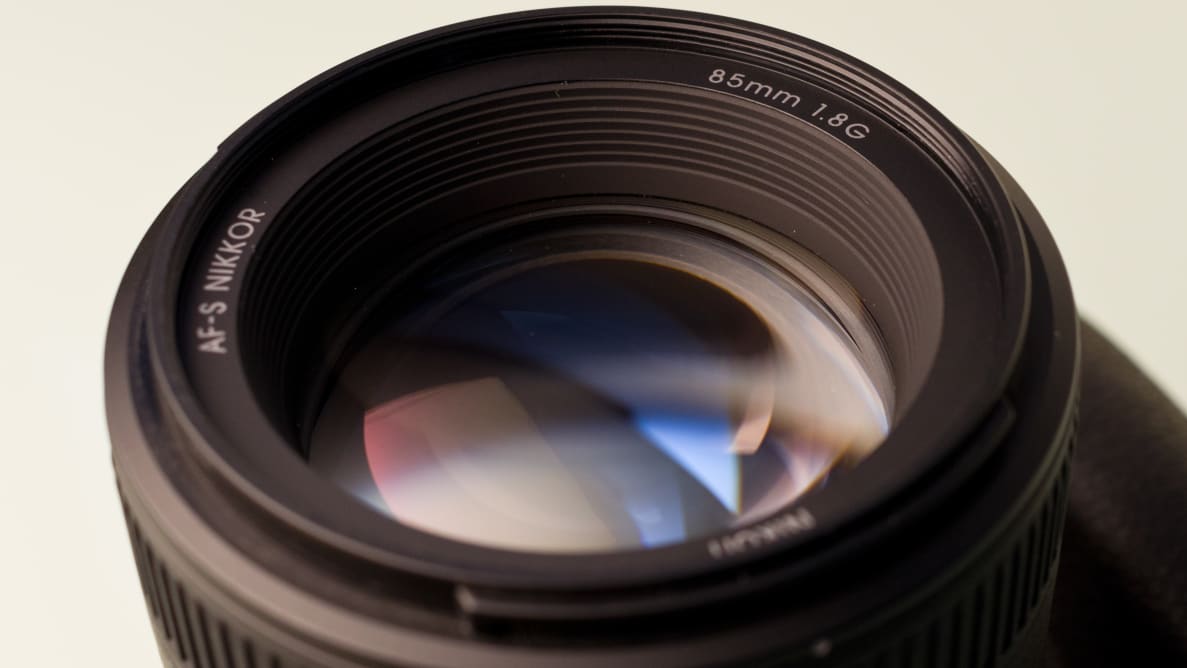While the 50mm f/1.8G is perhaps the best choice for a new Nikon DSLR owner's first prime, the Nikon 85mm f/1.8G should follow close behind. Designed as a portrait lens, it produces sharp images with excellent bokeh, even in dim light. Those traits also makes it a good (if slightly limiting) fit for sports and wildlife photographers—especially those with entry-level Nikon DSLRs.
But more than anything, the Nikon 85mm f/1.8G is special for its ability to produce excellent portraits at a very affordable price point. Whether you’re taking photos of your cat or your kid, this is one of the best sub-$500 lenses around.
Who's It For?
Though more experienced portrait photographers may want to step up to the Nikon 85mm f/1.4G for its faster aperture and smoother bokeh, the 1.8G is plenty of lens for just about anyone else. The f/1.8 aperture allows not only for sharp photos in dim lighting, but creates creamy background blur that helps isolate your subject from its surroundings.
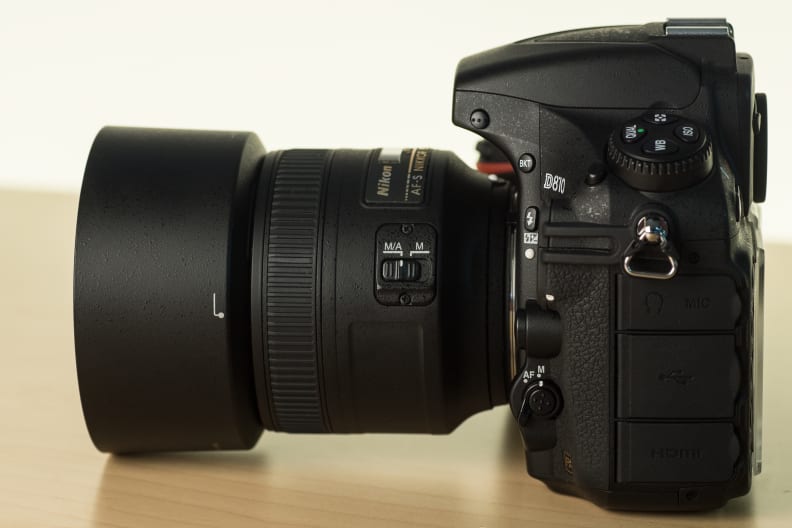
The 85mm f/1.8G's plastic build matches today's DSLRs, but it's less reassuring than the older, largely metal 85mm f/1.8D.
The 85mm focal length is considered ideal for portraits. It preserves realistic proportions while compressing the background even as it puts it out of focus. This creates backgrounds that envelop your subject, making for some excellent headshots and environmental portraiture (if you take a few steps back).
It’s important to note that while the AF-S focus motor makes this lens fully compatible with all of Nikon’s DSLRs, on a DX-format Nikon body it will function more like a 127mm lens—still useful for portrait work, but requiring a longer working distance.
Look and Feel
A few years ago, Nikon began refreshing many of its lenses, updating film-era designs for the digital age. The new lenses were given a "G" designation, trading metal bodies and physical aperture rings for more lightweight plastic and on-body control. The 85mm f/1.8G follows this pattern.
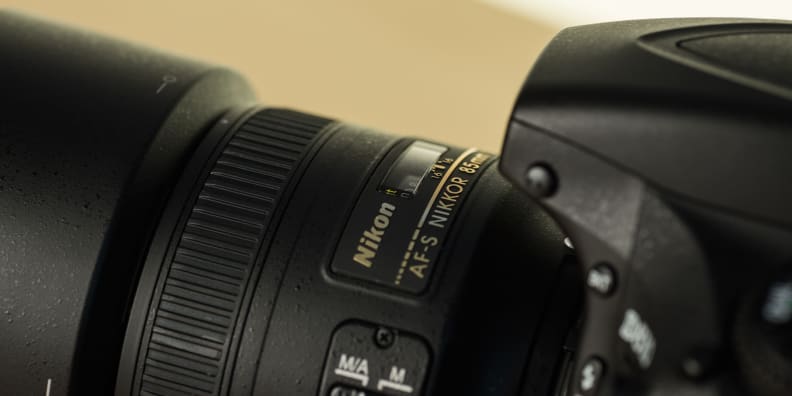
Unlike some lower-grade Nikon lenses, the 85mm f/1.8G offers extras like a focus scale and metal lens mount.
Though the plastic feels cheaper than metal, it's also a lot lighter. Compared to the older "D" version, Nikon was able to add its SWM autofocus motor and still shave a full ounce off the weight. It's quicker, and also much quieter. To engage the motor and allow for autofocus, there's an AF/MF switch on the side. Even when AF is on, you can override it by turning the manual focus ring—a useful fallback for times when the autofocus simply isn’t behaving the way you want.
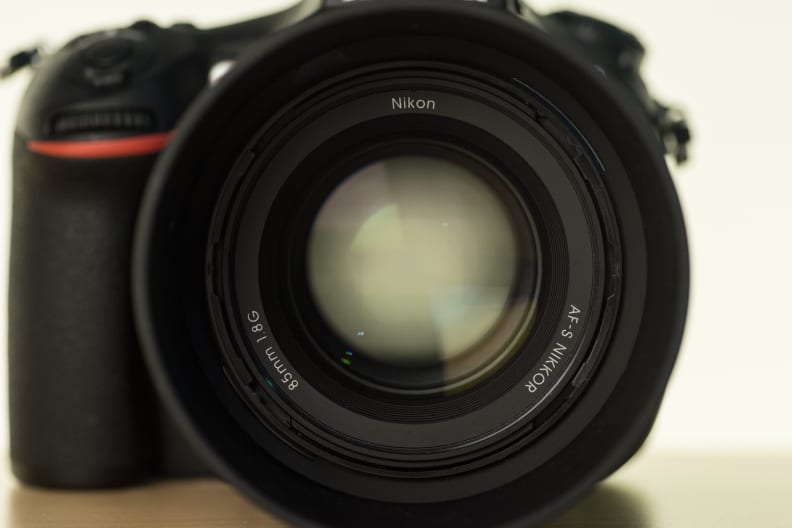
The f/1.8G maximum aperture not only allows for faster shutter speeds in dim light, but also creates beautiful bokeh.
The focus ring rotates smoothly, with a useful little “click” response when you’ve reached either end of the focus range. (Since this lens uses focus by wire, it doesn't actually stop rotating at either end.) There’s a focus scale on the top of the lens with markings to indicate depth of field at the minimum aperture of f/16, making snap focusing a little easier for street photography, too.
{{ photo_gallery name="Tour" }}
Image Quality
Even without taking its sub-$500 price into account, the Nikon 85mm f/1.8G put in a remarkable performance in our lab testing, and backed it up with stellar real-world results. This is a lens that can boast minimal distortion, negligible chromatic aberration, and superb bokeh. But what really stands out is its ability to render the finest details—when paired with a similarly high-resolution camera.

EXIF: 85mm, ISO 100, 1/1250, f/1.8
On the 36-megapixel Nikon D810, this lens was able to resolve more fine detail than virtually any other lens we've tested—only the Sigma 50mm f/1.4 Art has impressed us more. It even outgunned the more expensive Nikon 85mm f/1.4. Though the bokeh from the f/1.4 version is generally considered to be superior, there's no getting around the simple fact that this lens is sharper at every aperture.
We took the 85mm f/1.8G out of the lab and used it for an impromptu portrait session with the D810, where it performed admirably. As you'll see below, the results were razor sharp, with generally smooth bokeh and excellent subject isolation.
{{ photo_gallery name="Samples" }}
Conclusion
Though not nearly as flexible as high-end zoom lenses, wide-aperture primes can get you beautiful bokeh, awesome edge-to-edge sharpness, and minimal distortion, often at a fraction of the price. For beginner photographers who want to get the most out of their DSLRs, that’s hard to pass up.
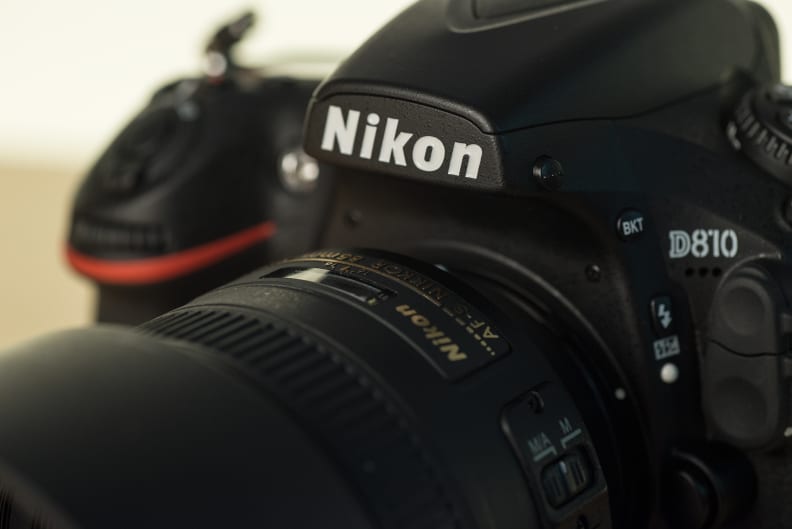
On the Nikon D810 and other full-frame DSLRs, the 85mm f/1.8G provides an ideal perspective for portraits.
The Nikon 85mm f/1.8G is one of the best values around if you're looking for a tack-sharp portrait prime. In our lab testing it outperformed almost every other Nikon-mount lens we've tested, including the faster, more expensive 85mm f/1.4G—particularly in terms of sharpness.
Even if you're using an entry-level Nikon "DX" DSLR, this is one of the best ways to spend your dollar. Though a Nikon D5500 or D3300's smaller sensor will cause the 85mm f/1.8G to act like a 127mm lens, it's still a useful portrait focal length—you'll just have to back up a few feet.
If you're looking for alternatives, consider the $220 Nikon 50mm f/1.8G. It acts like a 75mm f/1.8 lens on Nikon DX-format DSLRs, but you'll still be able to use it as a 50mm walkaround or short portrait lens if you upgrade to a FX body down the line. It's just not nearly as sharp as this lens, though few lenses are.
Deciding which of these prime lenses is right for you will depend on your budget as well as your short- and long-term goals. But either way, you're going to get a fantastic lens without having to spend a lot of money. When evaluating any lens, we focus on four key areas: sharpness, distortion, chromatic aberration, and bokeh. A perfect lens would render the finest details accurately, wouldn’t distort straight lines or produce ugly fringing around high-contrast subjects, and would create smooth out-of-focus areas.
The Nikkor 85mm f/1.8G is one of the best-performing lenses that we've tested to this point. Perhaps surprisingly, it handily outperforms Nikon's 85mm f/1.4G—a lens that costs over $1,000 more—in most of our tests. So not only is it a stellar performer, but it's one of the best values in the Nikon lens system.
Sharpness
A lens's sharpness is its ability to render the finest details in photographs. In testing a lens, we consider sharpness across the entire frame, from the center of your images out to the extreme corners, using an average that gives extra weight to center performance. We quantify sharpness using line widths per picture height (LW/PH) at a contrast of MTF50.
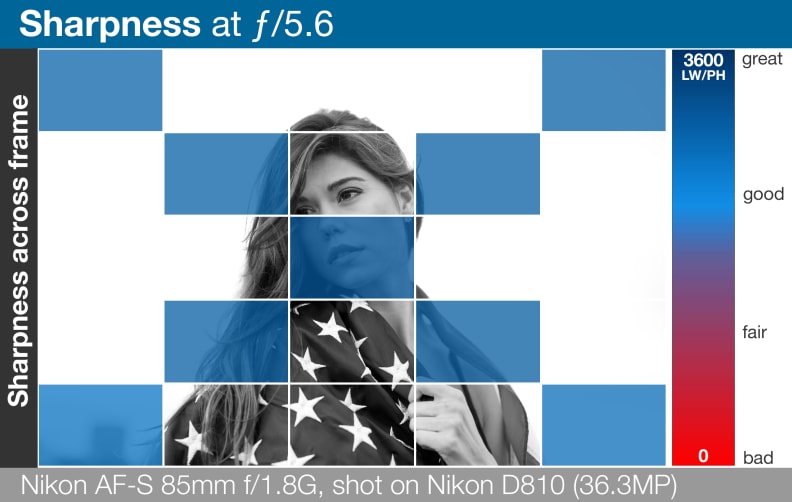
Nikon's 85mm f/1.8 is the crème de la crème of Nikon's primes at f/5.6.
In the image center, the 85mm f/1.8G performs astoundingly well on the demandingly high-resolution Nikon D810. Though it manages just 1,875 lines at f/1.8, it quickly shoots above 2,000 lines as you stop down, topping out at a remarkable 3,000 lines by f/5.6—one of the best results we've recorded thus far.
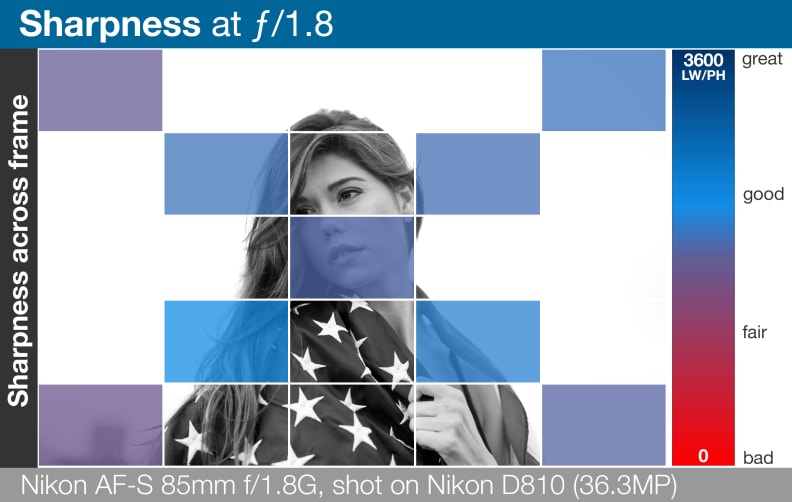
Even at full wide, this is a tack-sharp lens.
Away from the center, sharpness is (predictably) a little less stunning, though the midway region (50% from the center) averages over 2,000 lines even wide open at f/1.8. and peaks at 2,960 lines at f/5.6. The extreme corners also provide exceptional performance, averaging over 1,880 lines at f/1.8 and shooting up well above 2,700 lines at f/5.6.
Distortion
We penalize lenses for distortion when they bend or warp images, causing normally straight lines to curve.
There are two primary types of distortion: When the center of the frame seems to bulge outward toward you, that’s barrel distortion. It's typically a result of the challenges inherent in designing wide-angle lenses. When the center of the image looks like it's being sucked in, that’s pincushion distortion. Pincushion is more common in telephoto lenses. A third, less common variety (mustache distortion) produces wavy lines.
The 85mm f/1.8G, like most telephoto lenses, suffers from some pincushion distortion. It's nothing serious, however, barely topping 1%. That's well below the 2% threshold where distortion typically becomes noticeable, and perfectionists can easily eliminate it using photo editing software.
Chromatic Aberration
Chromatic aberration refers to the various types of “fringing” that can appear around high contrast subjects in photos—like leaves set against a bright sky. The fringing is usually either green, blue, or magenta and while it’s relatively easy to remove the offensive color with software, it can also degrade image sharpness.
Like many prime lenses, the Nikkor 85mm f/1.8G handles chromatic aberration with aplomb. Even at f/1.8, there are hardly any visible traces of colored fringing, and at every aperture as you stop down CA stays well within the "insignificant" range.
Bokeh
Bokeh refers to the quality of the out of focus areas in a photo. It's important for a lens to render your subject with sharp details, but it's just as important that the background not distract from the focus of your shot.
While some lenses have bokeh that's prized for its unique characteristics, most simply aim to produce extremely smooth backgrounds. In particular, photographers prize lenses that can produce bokeh with circular highlights that are free of aspherical distortion (or “coma”). This is one area where the 85mm f/1.8 just falls short, as its out of focus points have a slight "busy" quality that shows up in some samples.

As a portrait lens, one of the Nikkor 85mm f/1.8G's primary design goals is to produce attractive bokeh. If it doesn't, distracting backgrounds could draw viewer's eyes away from the subject. This is easily visible in the shot below, as your eye is drawn immediately to the subject instead of the background. Even with a tough backdrop like brick, the 85mm f/1.8G holds its own.

EXIF: 85mm, ISO 100, 1/1250, f/1.8
While we've tested lenses with smoother bokeh, this is one of Nikon's better efforts. It's nearly on par with the 85mm f/1.4G, though there's a visible difference between the seven-bladed diaphragm used here and the f/1.4G's nine-bladed diaphragm as you stop down. It's still on par with some of the best lenses that we've tested, however, making this an even better value for anyone who balks at the 85mm f/1.4G's asking price.
Meet the tester
TJ is the former Director of Content Development at Reviewed. He is a Massachusetts native and has covered electronics, cameras, TVs, smartphones, parenting, and more for Reviewed. He is from the self-styled "Cranberry Capitol of the World," which is, in fact, a real thing.
Checking our work.
Our team is here for one purpose: to help you buy the best stuff and love what you own. Our writers, editors, and lab technicians obsess over the products we cover to make sure you're confident and satisfied. Have a different opinion about something we recommend? Email us and we'll compare notes.
Shoot us an email

